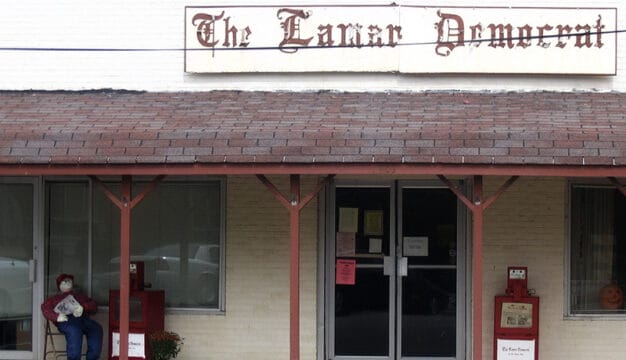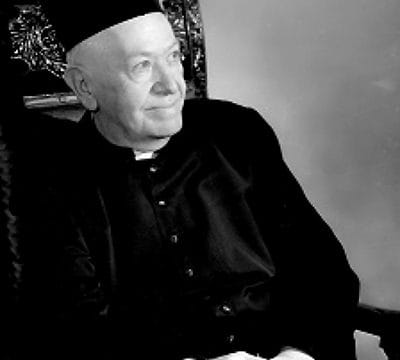Pollard
Pollard is located in south-central Escambia County in the extreme south-central part of the state, on the Alabama/Florida state line just northeast of the Conecuh River. It has a mayor/city council form of government.
History
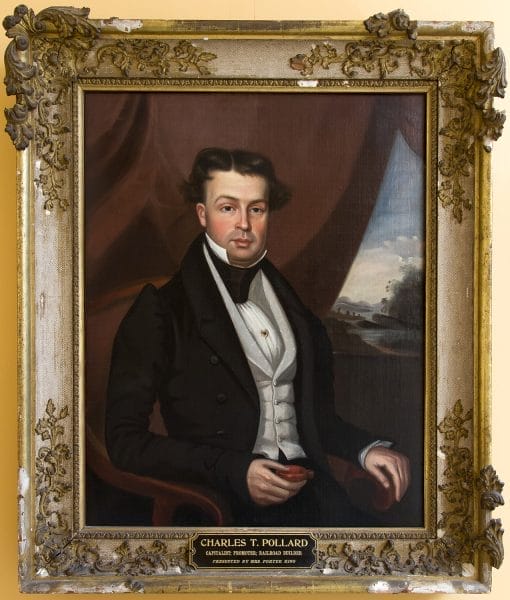 Charles Pollard
The area around present-day Pollard was populated by the early nineteenth century, but settlers were scattered. When first settled, it lay within the borders of Conecuh County. The town began to be referred to as Pollard between 1854 and 1861, when Charles T. Pollard, the founder and president of the Alabama and Florida Railroad, constructed a rail line connecting the town with Montgomery and Pensacola, Florida. More settlers arrived and built homes and businesses near the tracks. The Montgomery to Pollard Line was officially completed in early 1861 and three additional rail lines—the Alabama and Florida (Montgomery to Pollard), the Florida and Alabama (Pensacola to Pollard), and the Great Northern (Tensaw to Pollard)—had converged in the town by the early 1860s. A railroad turntable was added at some point, and roads, bridges, and ferries were also constructed and improved to accommodate the expanding population and economy. During the town’s early years, the economy was driven by the timber industry and rail traffic. At its peak just before and during the Civil War, Pollard’s population was around 1,000 people.
Charles Pollard
The area around present-day Pollard was populated by the early nineteenth century, but settlers were scattered. When first settled, it lay within the borders of Conecuh County. The town began to be referred to as Pollard between 1854 and 1861, when Charles T. Pollard, the founder and president of the Alabama and Florida Railroad, constructed a rail line connecting the town with Montgomery and Pensacola, Florida. More settlers arrived and built homes and businesses near the tracks. The Montgomery to Pollard Line was officially completed in early 1861 and three additional rail lines—the Alabama and Florida (Montgomery to Pollard), the Florida and Alabama (Pensacola to Pollard), and the Great Northern (Tensaw to Pollard)—had converged in the town by the early 1860s. A railroad turntable was added at some point, and roads, bridges, and ferries were also constructed and improved to accommodate the expanding population and economy. During the town’s early years, the economy was driven by the timber industry and rail traffic. At its peak just before and during the Civil War, Pollard’s population was around 1,000 people.
Early in the Civil War, the Confederacy established Camp Pollard, a substantial military training camp, north of town to protect the railroad lines. It also was referred to as Camp Tattnall for Capt. John R. F. Tattnall, who commanded the camp. In December 1864, federal raiders from Fort Barrancas near Pensacola overran Pollard, burned the town’s buildings, and destroyed the railroad tracks. Late in the war, the town experienced three federal incursions. A U.S. Army brigade under Lt. Col. Andrew B. Spurling marched on Pollard in late March 1865 as part of the movement against Fort Blakeley and took control of the town, which had been abandoned by Confederate troops. About the same time, Maj. Gen Frederick Steele came through, and then Maj. Gen. Benjamin H. Grierson passed through in mid-April. In 1868, after the war, Alabama created Escambia County from parts of Baldwin and Conecuh Counties, and residents named Pollard the county seat because it was centrally located in the new county. The Alabama and Florida Railroad Company opted to rebuild the rail junction in nearby Flomaton instead of Pollard, however, and economic activity in Pollard declined significantly. Many of Pollard’s citizens began to move elsewhere, and by 1872 the town’s population had shrunk to 300 people. The timber industry survived, however, with a few mills remaining open.
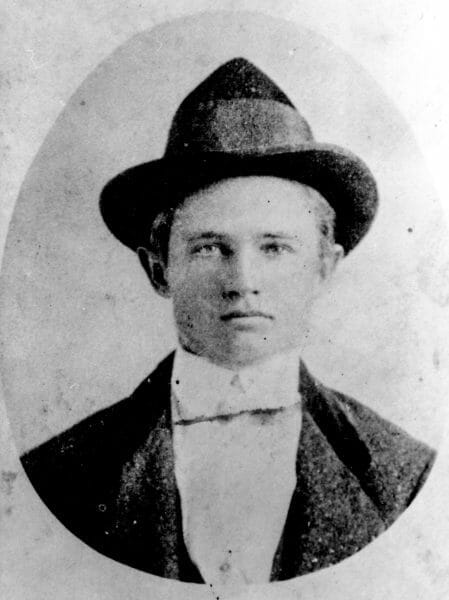 Rube Burrow
As the town of Brewton overtook Pollard as a center of business activity and population, many county residents lobbied to move the county seat there. The residents held several votes in the 1870s, but the results were always disputed by the losing side. The debate became quite heated. One source claims that Pollard residents released a boxcar of feral cats into the streets of Brewton and a posse from Brewton retaliated by riding to Pollard in the middle of the night and stealing all of the county records from the Pollard courthouse before burning it down. The county courthouse indeed burned in 1879, but another source states that an arsonist was indicted but freed for lack of evidence, and many records were destroyed. The citizens of Brewton promptly argued that the time had come to relocate the seat, and it was granted that designation in 1880. Famed outlaw Rube Burrow robbed a train on the L&N Railroad line through Pollard in September 1890.
Rube Burrow
As the town of Brewton overtook Pollard as a center of business activity and population, many county residents lobbied to move the county seat there. The residents held several votes in the 1870s, but the results were always disputed by the losing side. The debate became quite heated. One source claims that Pollard residents released a boxcar of feral cats into the streets of Brewton and a posse from Brewton retaliated by riding to Pollard in the middle of the night and stealing all of the county records from the Pollard courthouse before burning it down. The county courthouse indeed burned in 1879, but another source states that an arsonist was indicted but freed for lack of evidence, and many records were destroyed. The citizens of Brewton promptly argued that the time had come to relocate the seat, and it was granted that designation in 1880. Famed outlaw Rube Burrow robbed a train on the L&N Railroad line through Pollard in September 1890.
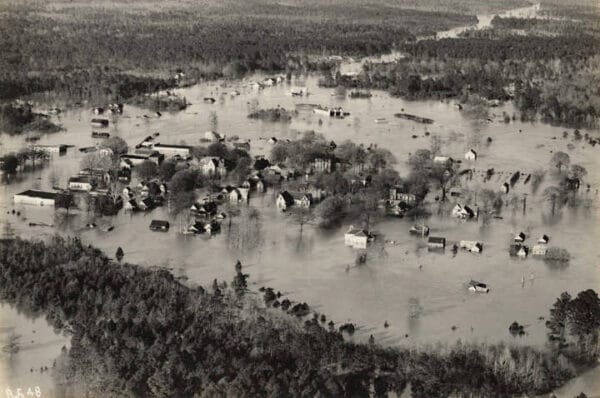 Flooded Pollard, 1929
Timber from the once-dense pine forest that surrounded Pollard became severely depleted in the first decade of the twentieth century, prompting the remaining lumber mills to shut down. Pollard endured a massive flood that destroyed much of the town in 1929, a calamity that was followed quickly by the Great Depression. These natural and economic misfortunes led to even more people abandoning the town, and the bank and several stores closed. Pollard enjoyed a small boom in 1952 when an entrepreneur struck oil in a nearby field, established a well, and began producing oil. More oil fields were soon located in other parts of Escambia County, however, and the refineries were built in the rival towns of Jay and Flomaton.
Flooded Pollard, 1929
Timber from the once-dense pine forest that surrounded Pollard became severely depleted in the first decade of the twentieth century, prompting the remaining lumber mills to shut down. Pollard endured a massive flood that destroyed much of the town in 1929, a calamity that was followed quickly by the Great Depression. These natural and economic misfortunes led to even more people abandoning the town, and the bank and several stores closed. Pollard enjoyed a small boom in 1952 when an entrepreneur struck oil in a nearby field, established a well, and began producing oil. More oil fields were soon located in other parts of Escambia County, however, and the refineries were built in the rival towns of Jay and Flomaton.
Demographics
According to 2020 Census estimates, Pollard recorded a population of 122. Of that number, 64.8 percent of respondents identified themselves as white, 19.7 percent as Hispanic or Latino, 9.8 percent as African American, 5.7 as American Indian, and 5.7 percent as two or more races. The town’s median household income was $30,938, and the per capita income was $13,052.
Employment
According to 2020 Census estimates, the workforce in Pollard was divided among the following industrial categories:
- Arts, entertainment, recreation, and accommodation and food services (20.6 percent)
- Educational services, and health care and social assistance (17.6 percent)
- Public administration (14.7 percent)
- Construction (8.8 percent)
- Retail trade (8.8 percent)
- Finance, insurance, and real estate, rental, and leasing (5.9 percent)
- Professional, scientific, and management, and administrative and waste management services (5.9 percent)
- Transportation and warehousing and utilities (5.9 percent)
- Agriculture, forestry, fishing and hunting, and extractive (5.9 percent)
- Manufacturing (2.9 percent)
- Wholesale trade (2.9 percent)
Education
Students in Pollard attend Escambia County schools; no public schools are located within the town limits.
Transportation
County Road 35 bisects Pollard going northeast-southwest. U.S. Highway 29/31 runs northeast-southwest less than a mile northwest of Pollard. The Brewton Municipal Airport is located approximately ten miles northeast of Pollard. CSX Transportation operates a rail line through the town.
Events and Places of Interest
The Conecuh River is located about two miles southeast of Pollard, offering fishing, swimming, boating, and other water sports, and the town maintains a boat ramp.
Additional Resources
Escambia County Heritage Book Committee. The Heritage of Escambia County, Alabama. Clanton, Ala.: Heritage Publishing Consultants, 2002.
Waters, Annie C. History of Escambia County, Alabama. Huntsville, Ala.: Strode Publishers, 1983.

